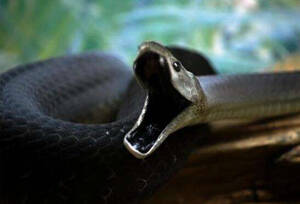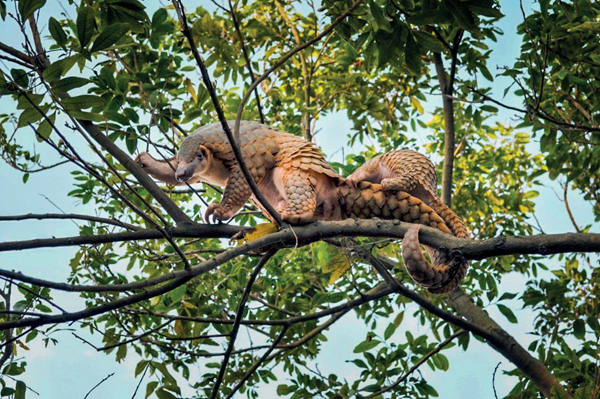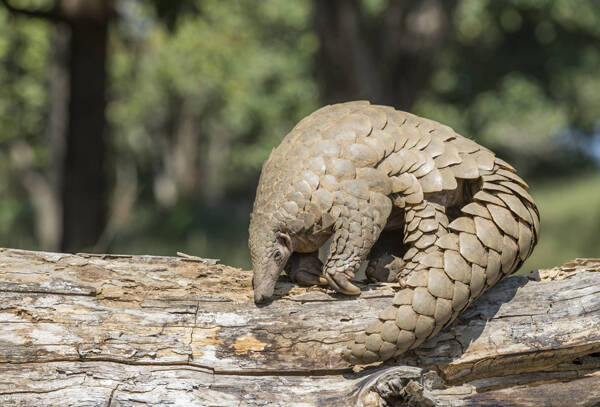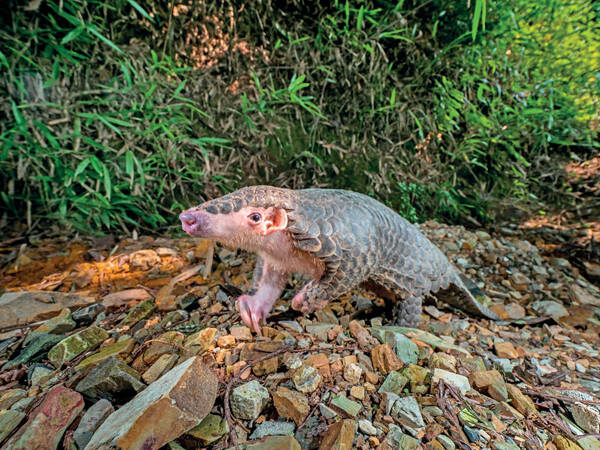Dendroaspis polylepis
IUCN
LCBasic Information
Scientific classification
- name:Dendroaspis polylepis
- Scientific Name:Dendroaspis polylepis,Black Mamba
- Outline:Pangolins
- Family:Snakes Elapidae B.Mamba
Vital signs
- length:Above 2 meters, up to 4.5 meters
- Weight:1.6kg or more
- lifetime:11-20 years
Feature
The fastest and most aggressive snake in the world
Distribution and Habitat
The black mamba is found in Angola, Botswana, Burkina Faso, Cameroon, Central African Republic, Democratic Republic of Congo, Eritrea, Ethiopia, Kenya, Malawi, Mali, Mozambique, Namibia, Somalia, South Africa, Swaziland, United Republic of Tanzania, Uganda, Zambia and Zimbabwe.
The black mamba lives below 1,000 meters above sea level. It is most commonly found in wooded savannas or riverine forests, especially in areas with rocky hills and dense stands of large trees. It can also be found in coastal scrub, wet and dry savannas and woodlands. The species is primarily found on the ground, however, they are also arboreal. In the areas where the black mamba is mainly found, 75% of people are engaged in agriculture; during midday, the black mamba will usually climb to higher places (like tree tops) to bask in the sun or wait for prey.
Appearance
The black mamba is a slender snake with an average weight of 1.6 kg; adults living in different areas are 2.0-3.0 meters long, with an average length of 2.2-2.7 meters. There are even rare cases of 4.3 or 4.5 meters in length. The black mamba's name comes from its jet-black mouth, not its brown body. The head is oblong, and the body color is olive, brown, gray or sometimes khaki. Juveniles are lighter in color, mainly bright gray or olive green. Their underparts are white or cream, sometimes mixed with green or yellow. The back half of the body may be spotted with black, and some individuals have alternating dark and light black near the back, giving the impression of horizontal stripes. The inside of the mouth is dark blue to ink black. The eyes are dark brown to black, with a silvery white to yellow edge on the pupil. The black mamba has pearly smooth scales located in the middle of 23 to 25 (in some cases 21) rows.
Details
Black Mamba (scientific name: Dendroaspis polylepis): It is a venomous snake of the family Elapidae and the genus Black Mamba, with 2 subspecies.
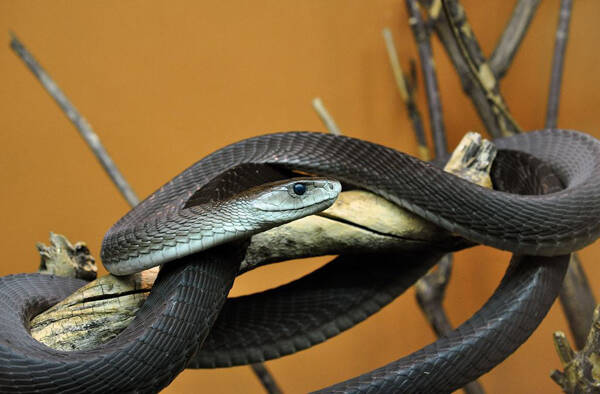
One of the reasons why the Black Mamba is so famous is that it contains a lot of legendary color. In Africa, many people have heard the legendary stories of black mamba snakes: some say that black mamba snakes can catch up with a running horse; some say that a black mamba snake killed 13 people who surrounded it in just 1 minute; and some say that they saw a black mamba snake pounce on the glass of a car. Of course, these are just rumors and have not been scientifically verified. But in any case, this is also a feature of black mamba snakes.
Black mamba snakes are active during the day and usually bask in the sun on branches before hunting. The species usually occupies a cave as a shelter, such as a cave, hollow log, stone crevices or termite nests, and returns to the nest at night. The diet consists of warm-blooded prey, feeding on small rodents, birds, hyraxes, and bats.
The venom of black mamba snakes is a neurotoxin, which is extremely toxic. It is the fastest and most aggressive snake in the world. It can move at a speed of 16-20 kilometers per hour over short distances, with an amazing lightning speed. When moving, it usually raises 1/3 of its body. When threatened, the black mamba can stand up 2/3 of its body and open its black mouth to attack. The black mamba snake does not actively attack humans, but its fast movements are only to chase prey and quickly escape to the nearest habitat when in danger. It usually attacks 1-2 times in a row to make the enemy retreat. The big snake can release 30-40 mg of venom each time it attacks.
In addition to human capture and hunting, the natural enemies of the black mamba snake are often eaten by mongooses; and adult snakes may also become the target of hunting by secretary birds, etc.
The black mamba is perhaps one of the most deadly snakes in Africa, with a venom comparable to that of the golden cobra. The black mamba uses neurotoxins to paralyze the prey's nervous system. On average, 10-15 mg of black mamba venom can kill an adult, while the amount of black mamba venom is 100-120 mg, up to 200 mg, which is enough to kill 13-20 people or a 600 kg giraffe. Therefore, the consequences of being bitten by a black mamba are quite serious. Usually, death will occur within an hour after being bitten, and the fastest death time can reach immediate death within 15-30 minutes after being bitten. After being bitten by a black mamba, the body will soon be completely paralyzed, as light as being drunk. In the case of paralysis, the victim will have symptoms such as difficulty breathing and then die. Since Africa was a backward country in the past and there was no anti-venom serum, there was basically no hope of survival if bitten by a black mamba. With the advent of the serum, the chance of death from a black mamba bite has been relatively reduced. Although there are not many records of black mamba bites, the mortality rate in the local area can reach 75%. The mortality rate of bites without anti-venom serum is close to 100%.
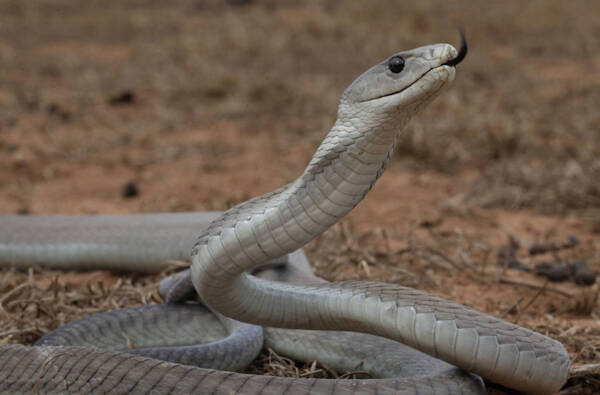
Black mambas usually breed between October and November. Male snakes will find females by smell. Once a male finds a female, the black mamba will touch the other's body with its tongue. If the other accepts, the two snakes will entwine and begin mating. Female black mambas lay 6-17 white eggs in termite mounds or nests, and the incubation period is 80-90 days. In some studies, juvenile black mambas are rarely observed, probably because they grow rapidly, reaching nearly 2 meters in length in their first year, and prefer to roost in trees more than adults. This is a relatively long-lived species, living up to 11 years or more in the wild and up to 20 years in captivity.
The expansion of the human population in the habitat of the black mamba may pose a potential threat to it. However, they are distributed in large numbers throughout most of Africa, not close to the vulnerable and endangered threshold criteria for species survival (distribution area or fluctuation range less than 20,000 square kilometers, habitat quality, population size, distribution area fragmentation), and the population trend is stable, so it is evaluated as a species with no survival crisis.
Listed in the IUCN Red List of Threatened Species in 2014 ver3.1 - Least Concern (LC).
Protect wild animals and eliminate game.
Maintaining ecological balance is everyone's responsibility!

